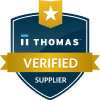Breaking Pump Lines
Are you breaking your pump lines? Pump lines often break for the following reasons:
- Too much back pressure
- Improper alignment of the pump line
- Lack of lubrication - causes smooth pump lines and friction.
- Using whip lines or necking material lines down
- Squeeze wheel rubbing against pump line
- Debris stuck inside of hte pump housing and rubbing on the pump line
- Material ball valve
- Obstruction stuck within material
- Clog in material line
- Too thick of material - unpumpable
Lubricator and Moisture Trap Information
The water separator and an oiler locater by the controls. Make sure the water is emptied and the oiler has been filled with oil to the proper level. 10wt or AW32 can be used in the oiler. Dump old oil out. Oil goes in the glass tube with the straw—Fill 1/2 to ¾.
Check gearbox – it should be half full of 90 WT.
Tips and Tricks When Pumping Grout
The Do's
Please read the manual before starting.
If you have never operated a Quikspray Carrousel Pump we recommend running
water through it first so you feel comfortable with the Forward, Stop, Reverse and
speed control.
ALWAYS condition your material. Cold grout will NOT pump. Please refer to the material manufactures’ recommendations on the temperature of the grout.
Please take note that just because the ambient temperature is 70 degrees and the material has been lying on a cold concrete floor will probably mean the material is not as warm as it should be. Put everything on a pallet to help keep the floor from sucking the heat from the material.
Always use as short of material line as possible for the job. This will eliminate
excessive back pressure. The use of oversized material lines will also help minimize pumping pressures and increasing production rates.
Prime the pump. This will help wet out the material lines for the initial run to
keep dry packs from occurring. If the product is an epoxy grout use the liquid
with no aggregate. Put 2-4 gallons of neat resin (NO aggregate) into the hopper
of the pump and then pump this liquid until no more is visible inside the pump
hopper. If the material is a Cement Grout, use 2-4 gallons of neat gray Portland
cement to prime the pump.
Now add the properly mixed batch to the pump and begin to pump. Remember
the first bit of material will be very wet. Add this priming liquid back to the mixer
to be mixed with the aggregate or discard the liquid.
Increase pumping speed until desired output is reached. Remember that epoxy grouts can be very sticky and hard to pump fast due to the nature of the material. Temperature will change the flow ability of the product.
Keep an eye on how hard the pump line (the black line inside the pump) is
working. While the pump is pumping, the pumping line will move slightly in and
out of the housing. Normal movement 2-5 inches forward to backward. If the
pump line starts to stretch further, it will indicate the pump is about to reach a
stall point. This can be caused by many factors. The first reason for this is the
product is too stiff or too much material line is being used. The second reason
would be “over pumping”. This means that the pump is spinning faster than what
the material wants to move causing excessive back pressure.
Clean Up
Many of our customers choose to cover their pumps with a tarp, plastic wrap, or
hydraulic oil so the clean-up process is much easier.
Pump all the grout out of the pump hopper and dash the sides of the hopper
down with a scraper paddle. Next place the clean out ball down in the base of the
hopper and pump until it begins to travel down the hopper elbow. Some
customers choose to use two cleanout balls to eliminate the water contamination
to the material still in the material lines. Add hot water (hotter the better but do
not burn yourself, be aware of your safety and take all safety precautions) and
Tide laundry soap or Dawn. Both products when combined with hot water cleans
an epoxy mess up very well without using solvents. Solvents can still be used at
the end of the cleaning process if desired to reach a perfect clean.
Pump until the sponge balls come out of the material line. Place them back in the
pump and do the process over again. If using oversized lines (such as a 1.50”
pump with 2.00” material lines) It is important to disconnect that material line
from the pumping line and push a sponge ball into the material line. Make sure
that there is no back pressure on the material line before disconnecting it from
the pumping line.
Clogging Tips
If a clog happens, place the pump into reverse until the pressure has dropped in
the material line so it is safe to disconnect. Hold/Pull on the material line so it is
not sucked into the pump when operating in reverse. Remove the material line
from the pump line and shake as much of the material out of the end of the hose
as possible. Couple the material line back to the pump. Most of the time this will
allow the clog to be pumped out of the material line. If this does not work shove
a garden hose up the material line to wash out the clog.
Epoxy Tips
Pay attention to afternoon heat as this can cause hot batches in epoxy.
Remember the more epoxy that is in one place will cause the chemical reaction to
get hotter faster. Don’t fill the pump up with epoxy and walk away for a
prolonged time. Make sure batches are mixed and used immediately. Pay
attention to batch times.
Maintenance
This is very simple. The pneumatic pump has a water separator and an oiler
locater by the controls. Make sure the water is emptied and the oiler has been
filled with oil to the proper level. 10wt or AW32 can be used in the oiler.
Check the chain tension. New chains will stretch until broken in. The chain
should just snug. Too tight will cause premature wear, too loose can cause the
chain to fall off during operation.
Periodically check your pumping hose. It is easier to take the hose out of the
pump and inspect it for wear than have the hose fail inside the pump causing a
mess that will have to be cleaned up before operation continues. If the pump is
not going to be used for a prolonged time, take out the pumping line and allow it
to relax. This will increase the life of your pumping hose. ALWAYS put Quikspray
Silicone on the outside of your pumping hose when reinstalling it. This will greatly
increase your pump hose life.
Control Box Failure Explanations
The wires are burnt inside the are caused from excessive current draw. Many things
can cause high current draw here is a list:
Poor incoming power or too thin of an extension cord. Check incoming power to make sure 110 vac is present and low voltage does not happen under load. We find this when people are using small generators. Use an appropriate extension cord capable of handling 20 amps at the length of the cord being used. Larger cords must be used for longer runs.
Make sure the mix is of proper consistency and is being mixed for 3 minutes in a
paddle style mixer. No Drum Mixers!
Reduce material line length to reduce pumping pressures which in turn reduces current draw. Quikspray does not recommend using whip lines as they cause inefficiencies in the pumping system.
The system has an overload feature to trip at a current load above 17amps after 5-7 seconds.
Operator repetitively resets the box after overload without changing anything to reduce load.
The pump is spinning faster than the material it can move.
Operator can slow the pump down and if the same amount of material is still being
sprayed/pumped then the system was over pumping.
When spraying/pumping thicker material lower gearing can be used to reduce current demand.
Use a smaller drive sprocket or a 20:1 gearbox. Many gearing options are available from Quikspray to tailor the equipment to the material being conveyed.
Upgrade from 110 vac 1hp to 220 vac/ pneumatic 3hp system – simply more omph!
Helpful Videos
How to Clean a Quikspray Pump
Pump Line Installation
Using Coupling Tool to put Couplings on Material Line
Quikspray Concrete Pump Reassembly and Startup (Part 1)
Quikspray Concrete Pump Teardown and Cleaning (Part 2)
Quikspray Concrete Pump Reassembly and Startup (Part 3)
Can't Find the Answer You're Looking For?
If you can’t find the answer to the question you have, let us know! Our team will be happy to help you get the information you need about our products.


